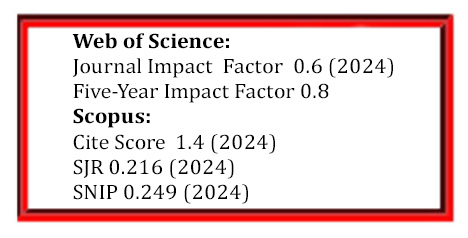Preparation and Electrocatalytic Properties of Nickel-Cobalt Metal Derivatives
DOI:
https://doi.org/10.5755/j02.ms.39603Keywords:
clean energy, water electrolysis for hydrogen production, catalytic electrode, transition metal phosphides, electrocatalytic activityAbstract
At present, platinum is the most efficient electrocatalytic hydrogen evolution catalyst, which can effectively accelerate the kinetic reaction process of hydrogen evolution. Therefore, it is very important to develop a non-noble metal catalyst with low cost, high catalytic activity and high stability for hydrogen production from water electrolysis. Up to now, transition metal sulfides, oxides, carbides, nitrides and phosphates have been proven to have good electrocatalytic activity. Among them, bimetallic phosphates have become the research hotspot in this field because of their high catalytic activity compared with others. In this study, transition metal salts, urea and ammonium fluoride were used as raw materials for in situ growth of transition metal dihydrohydride NiCo2/LDH on NF substrate based on hydrothermal reaction, the bimetallic phosphates NiCo2/NF grown on the NF substrate were obtained. The experimental results show that the prepared NiCo2P/NF catalyst exhibits excellent electrocatalytic performance. In alkaline media, a catal current density of 10 mA/cm2 can be obtained at an overpotential of 97 mV, with a Tafel slope of only 21 mV/dec. Moreover, its electrocatalytic activity can be maintained for more than 10 h, which is consistent with the before the experiment. This is mainly attributed to: the NiCo2P/NF derivative possesses the characteristics of a multimetal phosphide derived from transition metal elements Ni and Co after hydrothermal and phosphidation treatment. Its nanowire urchin-like heterostructure exposes more catalytically active sites, effectively promoting mass transfer and charge transfer accelerating the hydrogen evolution kinetics reaction process, and enhancing the catalytic performance with high catalytic stability.
Downloads
Published
Issue
Section
License
The copyrights for articles in this journal are retained by the author(s), with first publication rights granted to the journal. By virtue of their appearance in this open-access journal, articles are free to use with proper attribution in educational and other non-commercial settings.



